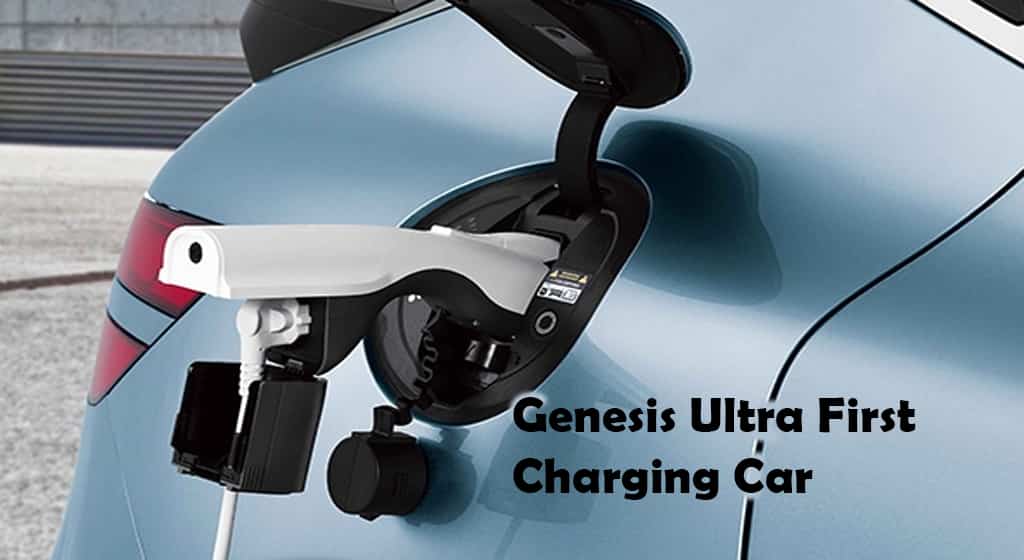Let’s talk about the features and types of Genesis Ultra First Charging system. In general, a vehicle’s charging time is determined by three primary factors: power source, charger capacity, and battery size. Cold and hot weather extremes add to charge times, but ambient conditions play a smaller role.
Several E-GMP variants from Genesis claim to charge times of 10 to 80 percent in 18 minutes. In just 22 minutes, the G80 achieved Genesis anticipated charging speed, moving the battery gauge from 10 to 80 percent.
Despite their relatively small size, these battery packs have 77.4 kWh and 87.2 kWh, respectively. In comparison, the Genesis car’s larger battery pack is 131kWh, which are 69 percent & greater than the Genesis car’s smaller battery pack of 50 percent. Consequently, Genesis cars do not take in a lot of juice but receive it quickly.
Ultra Fast Charging Range Features
Battery Size
Some Genesis EV batteries have ballooned to absurd levels as the race for range supremacy continues. In addition, Genesis vehicles are designed to be more efficient. Charging time is heavily influenced by this factor.

Eventually, manufacturers will describe charge times in a single metric. It still takes considerably longer to fill up an EV’s battery than to fill up a gas-powered car’s tank, regardless of where or how you do it.
Driving Range & Maximum Charging
If you are still charging after 20 percent, you may be hooked up to the fast charger for a second time. These units are best used when you are traveling a long distance and need additional electricity while traveling. Because a DC charger must completely charge the battery, these units are best used when traveling long distances.
The best way to get enough juice for local driving is to charge at home overnight, sometimes referred to as top-up charging.
Charger Capacity
In fact, the AC electricity from the wall is converted into DC electricity by the battery charger in the car, which charges the battery. The onboard charger delivers power to the battery pack safely and has its own power rating, usually measured in kilowatts. A fully discharged battery would, in theory, take 10 hours to charge if the car has a 10 kW charger and a 100 kWh battery pack.
In order to calculate a specific EV’s optimal charge time, divide its battery capacity by the charger’s power rating, then add 10 percent, since charging involves losses. The power source should be able to maximize the vehicle’s charger’s efficiency, assuming it can.
Types of Charging System
We will begin by discussing the power source. There are different types of electrical outlets. 240 volt outlets that power electric dryers are analogous to 120 volt, 15 amp receptacles in kitchens. The large batteries of all electric vehicles can, theoretically, are charged from the standard kitchen outlet, but imagine trying to fill a 55 gallon barrel from a squirt gun.
Level 1 Charging System
A 120 volt source is used for recharging batteries in an EV, categorized as Level 1. This standard is measured in days, not hours, when engineers design EVs.
Level 2 Charging System
It is prudent to install a 240 volt Level 2 charging system in your home if you own or plan to own an EV. In general, 240 volts and 40 to 50 amps are required for a Level 2 connection.
In spite of fewer amps being considered Level 2, most EV’s onboard chargers can be maximized with a 50 amp circuit. An inefficient power source is essentially a restrictor plate that increases the charge time if you don’t maximize the effectiveness of your vehicle’s onboard charger.
Level 3 Charging System
DC fast chargers, also known as Level 3 charging system, are the fastest charging options. They are the electric equivalent of watering the barrel with a fire hose. An intense DC current is pumped into the car’s battery, extending its range by miles in record time.
In comparison, Electrify America’s automotive defibrillators pump out up to 350 kW, while Tesla’s V3 Superchargers can pump out up to 250 kW. But like all charging, the flow is throttled back when the vehicle battery’s state of charge is approaching full. Vehicles can be charged by DC in a wide range of ways. It is possible to charge a Porsche Taycan at 270 kW, whereas the Chevy Bolt EV can only manage 50 kW.
Wrapping it Up
To test every EV, you can charge it at the highest speed & it can handle from a 10 percent to 90 percent charge state. In addition to making lofty claims about acceleration times, fuel efficiency, driving range, and charging rate, Genesis Automakers often boast about their products.
Most of us feel more comfortable pumping liquid fuel than visiting a charging station, so the metrics used to judge this type of vehicle can be somewhat unclear. Among the fastest charging EVs of any price range, Hyundai Ioniq 5, Kia EV6, and both Genesis GV60 and Electrified G80 fulfilled their charging estimates.
